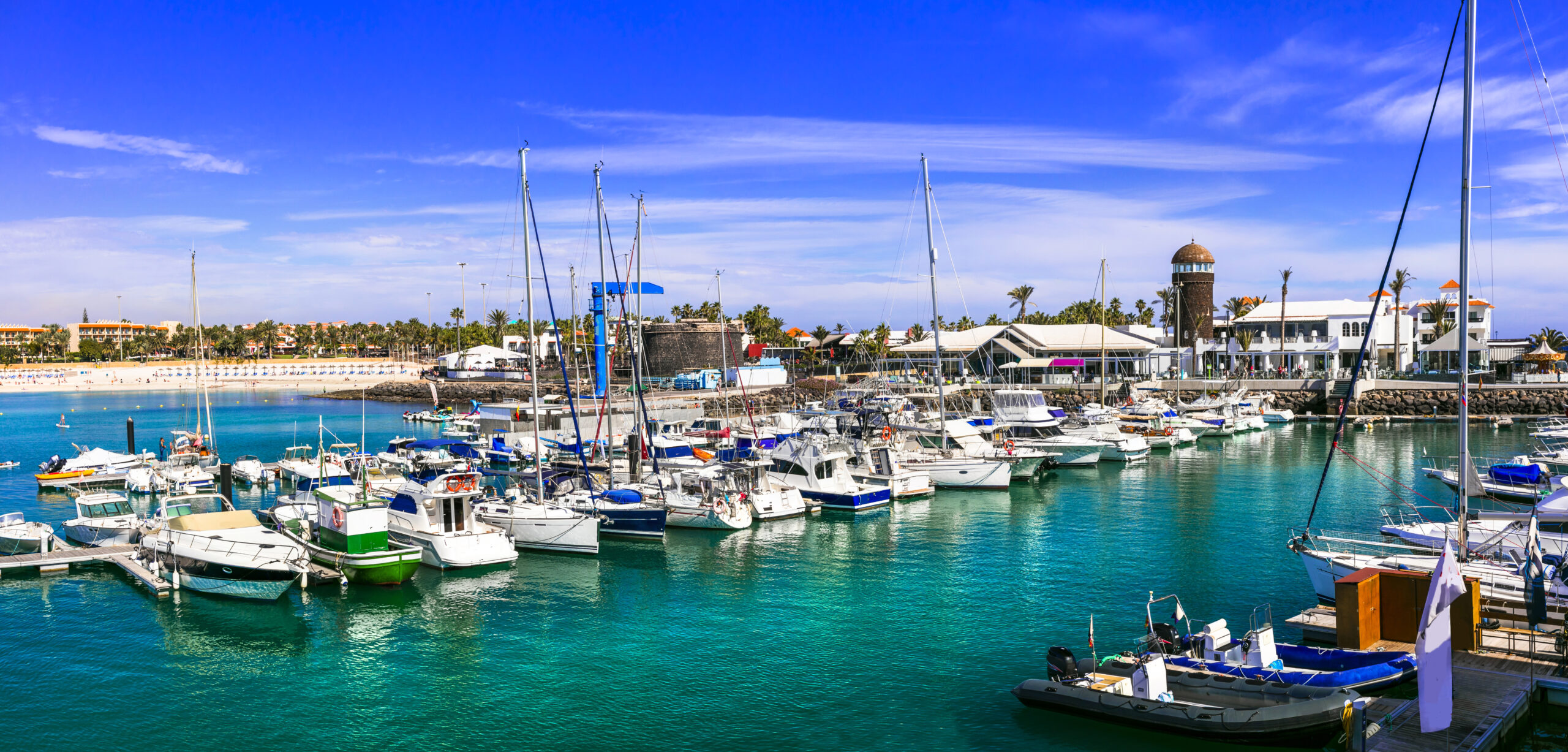Caleta De Fuste or El Castillo
Fuerte Focus - An Article by Bernie Power with The Voice

As you walk around Caleta de Fuste, or ‘El Castillo’ as it is often referred to by the locals, it seems hard to believe that this holiday resort was once a bustling port and harbour for Spanish sailing ships.
After the invasion in the 1400’s, El Castilo became the number one industrial port for importing supplies to the island. It was also used as a safe harbour for ships destined for the other Canarian islands and eventually a stop off on the way to the Americas. It gets its name from the words ‘Caleta’, which means bay, and a ‘fuste’ (or Fusta) was an Arab trading ship. The bay was so-called as there was a wreck of a Fuste laying just off the coast in the water for over 200 years.
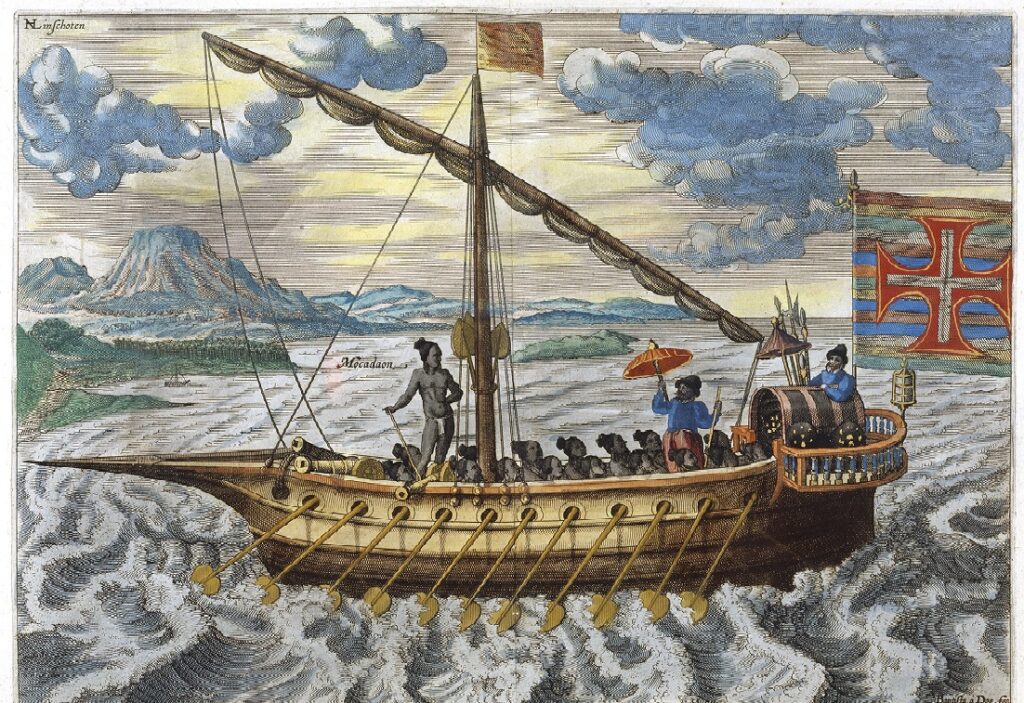
PIRATE SHIPS
Fustas were a favorite ship of the North African corsairs of Salé and the Barbary Coast. They were prized for their speed, mobility, capability to move without wind and ability to operate in shallow waters. This made them the perfect pirate ship, as hiding in coastal waters before pouncing on a passing ship was a crucial pirating technique. What the ship was called or how it sunk is unclear, but many Spanish ports were plundered by pirates using Fustes purely because of their amazing ability to get in close to the shore.
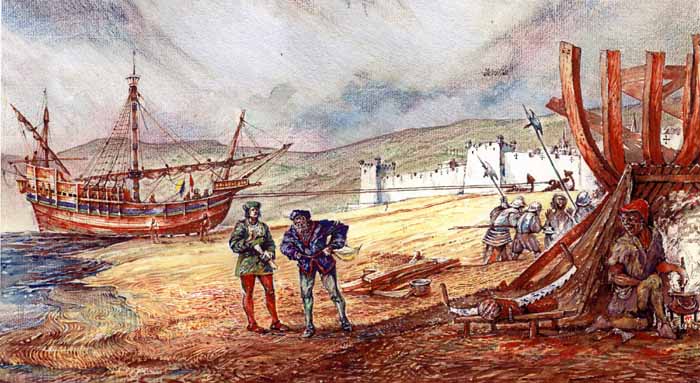
EXPORTS
Unfortunately, many of the cargo ships that left the port, never visited on their return journey. This meant that the island lost out on any possible bounty from South America. But by the late 1500’s it was a busy port, transporting the grain grown in Antigua over to the other islands, including Madeira. Alongside the grain was lime, a product which was produced in kilns all over the island. The lime industry was a massive boost to the islands economy and many of the old lime kilns are still visible today. A good example or an old kiln can still be seen in Ajuy today. The cochineal beetle was also exported and used for its natural, vibrant red dye. It was farmed on the Nopale cactus across the canaries and shipped from here during the 1700`s and until the 1850’s.
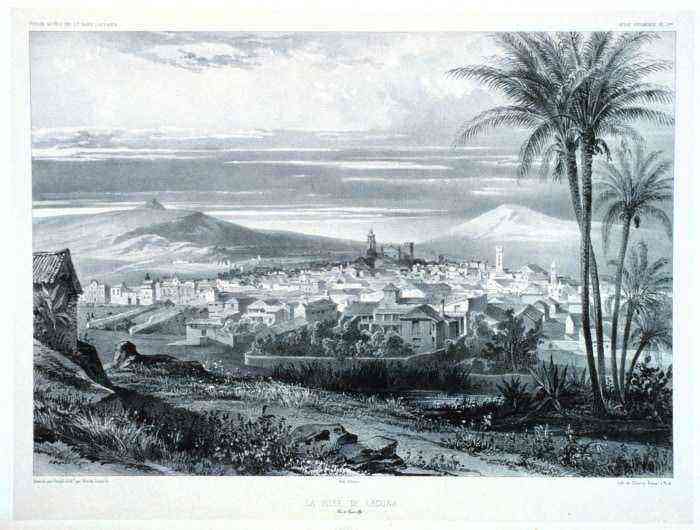
Artists Impression of what the bay would have looked like many years ago.
EL CASTILLO
However, around that time the port suffered from a major drought that affected all of the islands. This resulted in the Bay port often being closed off to prevent people leaving the islands and fleeing to the Americas. From 1739, for a period of nine years, Spain was at war with Britain. This resulted in battles such as the “War of Jenkin’s Ear.” There were also other attacks by privateers who were working for King George II. Subsequently in 1742 a tower (El Castillo) was built in the harbour area in order to offer protection against attacks from the sea. It is dedicated to St.Bonaventura. It never actually saw active service and is still standing proud, guarding the bay today, after being renovated recently. There is also a smaller copy of the tower situated by the bus station in Caleta too, welcoming you.
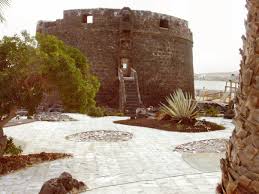 El Castillo - The Little fortress that was used to protect Caleta De Fuste Harbour from pirates
El Castillo - The Little fortress that was used to protect Caleta De Fuste Harbour from pirates
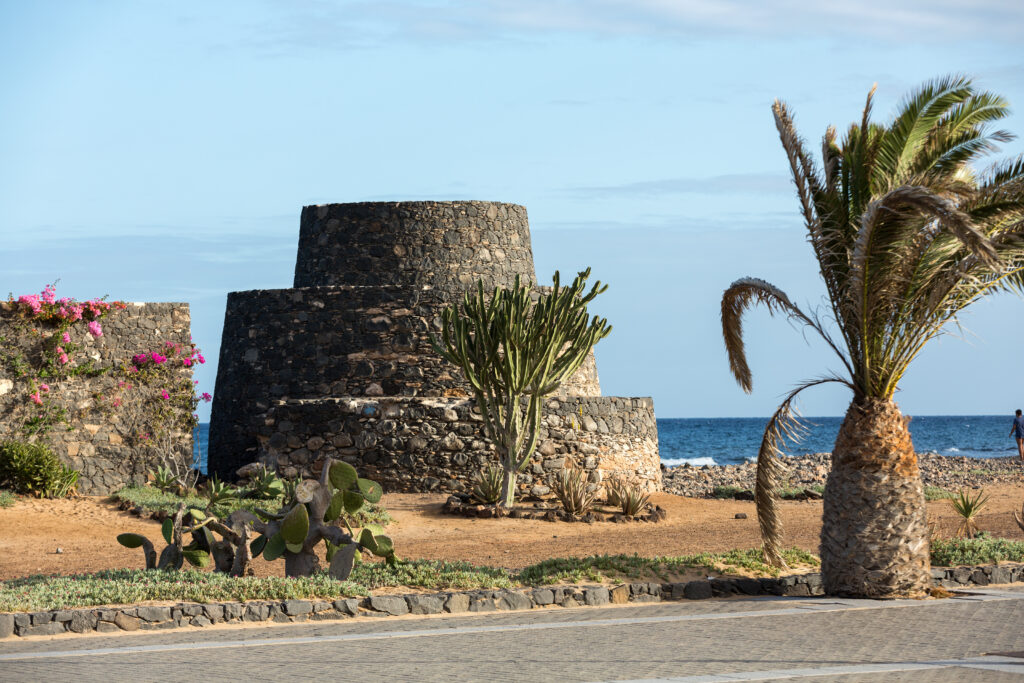
REBIRTH
Caleta as a place was forgotten by most, for more than 100 years. It was not until the late 1950’s that it was once again resurrected. The island needed an airport, and the chosen location was near Caleta. It was finally finished in 1969 and from then, the bay once again began to blossom. It now boasts hotels, bars, restaurants, a casino, harbour, a championship golf club which hosted the Spanish open in 2004 and a neighbouring course which opened in 2007. There are many improvements going on and the beach is getting a facelift, which means that soon you will be able to, literally sit back and relax on the “dock of the bay.”
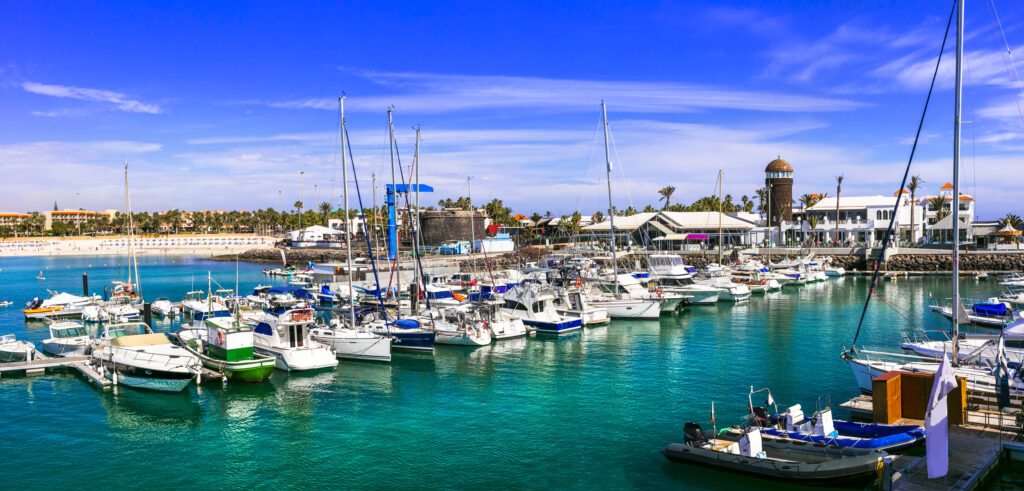
The newly rebuilt harbour of Caleta de Fuste. Now a lively hub of bars, restaurants, excursions and places for tourists and locals to hang out and enjoy the sunshine and scenery.

